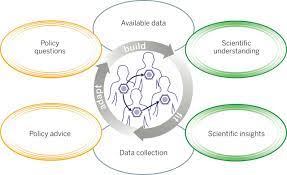Spillover and Spillback Infections: Understanding the Dynamics of Emerging Diseases
Sapna Sharma1, Baleshwari Dixit2, Apurv kaushik3, Namrata Upadhyay4, Abhilasha Nayak5 and Abhishek Asati6
1Teaching Associate, DUVASU, Mathura
2Assistant Professor, Co.V.Sc.&A.H., NDVSU, Rewa
3Corresponding author, Teaching Associate, DUVASU, Mathura Email: apurvkaushik149@gmail.com
4PhD Scholar, Co.V.Sc.&A.H., NDVSU, Rewa
5M.V. Sc Scholar, Co.V.Sc.&A.H., NDVSU, Rewa
6M.V. Sc Scholar, Co.V.Sc.&A.H., NDVSU, Rewa
Abstract
Spillover and spillback infections, two interconnected phenomena, have gained prominence as critical drivers of emerging diseases in both human and animal populations. Spillover refers to the transmission of pathogens from animals to humans or vice versa, while spillback denotes the reverse transmission of pathogens from humans or domesticated animals back to wildlife. This review explores the intricate dynamics of spillover and spillback infections, delving into their underlying mechanisms, contributing factors, and implications for global health and ecosystem stability. By examining case studies and recent research, we aim to provide a comprehensive understanding of these phenomena and underscore the importance of multidisciplinary approaches to disease prevention and management.
Keywords: Spillover, Spillback
Introduction: The continuous emergence of infectious diseases has heightened the urgency of studying spillover and spillback infections. These phenomena exemplify the complex interactions between species, ecosystems, and pathogens, emphasizing the need for a holistic understanding to effectively mitigate their impact. Spillover and spillback events challenge traditional disease paradigms and underscore the intricate connections between human, animal, and environmental health. In an increasingly interconnected world, the spread of infectious diseases has become a major concern for global health. The concepts of “spillover” and “spillback” infections play a pivotal role in understanding the dynamics of emerging diseases and their potential impact on human and animal populations.
Spillover: Bridging the Species Barrier: Spillover refers to the transmission of infectious agents, such as viruses or bacteria, from one species to another. While not a new phenomenon, spillover events have garnered significant attention due to their potential to trigger outbreaks or pandemics. One of the most notable examples is the spillover of the HIV virus from non-human primates to humans, leading to the global AIDS pandemic. Spillover events can occur through various mechanisms. Zoonotic diseases, which originate in animals but can infect humans, are perhaps the most well-known spillover examples. Factors driving zoonotic spillover include encroachment on wildlife habitats, increased human-animal interactions, and changes in land use. As humans and animals come into closer contact, the likelihood of pathogens crossing the species barrier rises.
Spillback: The Return Journey: Spillback, on the other hand, refers to the reverse transmission of an infectious agent from humans or domesticated animals back to wildlife populations. This phenomenon highlights the potential for humans to act as reservoirs for diseases that can then infect animals. This is particularly concerning as it can lead to the establishment of new disease reservoirs in wildlife, perpetuating the cycle of infection and complicating control efforts. The concept of spillback challenges the traditional perspective that wildlife serves as the primary source of infectious diseases. It underscores the intricate relationship between humans, animals, and pathogens, emphasizing the need for a holistic approach to disease surveillance and management.
Mechanisms of Spillover and Spillback: Spillover events are driven by a myriad of factors, including changes in land use, habitat destruction, wildlife trade, and global travel. Zoonotic diseases, such as Ebola and COVID-19, illustrate the potential for pathogens to bridge the species barrier, often with devastating consequences. The increased frequency of spillover events highlights the interconnectedness of ecosystems and the impact of human activities on pathogen transmission dynamics. Conversely, spillback infections illuminate the role of humans as potential reservoirs for diseases in wildlife populations. Domesticated animals, through close proximity and shared environments, can act as intermediaries, facilitating the transmission of pathogens back to wildlife. This phenomenon challenges assumptions about the direction of disease transmission and underscores the need for comprehensive surveillance strategies.
Factors Driving Spillover and Spillback
- Globalization and Travel: Increased international travel and trade facilitate the rapid movement of pathogens across borders, amplifying the risk of spillover and spillback.
- Environmental Changes: Deforestation, urbanization, and habitat destruction can force wildlife species into closer proximity with humans and domesticated animals. This heightened interaction increases the chances of disease transmission.
- Climate Change: Altered climatic conditions can impact the distribution and behavior of both pathogens and their hosts, potentially expanding their ranges and increasing the likelihood of spillover.
- Antimicrobial Resistance: The misuse and overuse of antibiotics can lead to the development of drug-resistant strains of pathogens, making infections more challenging to treat and control.
- Livestock Intensification: Intensive farming practices can facilitate the emergence of new diseases in livestock, with spillback potential into wildlife and humans.
Implications for Health and Ecosystems: Spillover and spillback infections have significant consequences for both human and animal health. Outbreaks of zoonotic diseases can lead to public health emergencies, economic losses, and social disruption. In wildlife populations, spillback infections can result in declines or extinctions of species, disrupting ecosystem balance and biodiversity.
Mitigation and Future Outlook: Preventing and managing spillover and spillback infections requires a multidisciplinary approach that involves public health, veterinary science, ecology, and social sciences. Early detection and surveillance are crucial to identify potential spillover events before they escalate into larger outbreaks. International cooperation and information sharing are vital to address emerging diseases on a global scale. Additionally, promoting sustainable land use, conserving biodiversity, and implementing responsible wildlife management practices can help mitigate the risk of spillover and spillback infections. Research into understanding the drivers of these phenomena can inform targeted interventions and policy decisions to prevent future outbreaks.
Conclusion: Spillover and spillback infections serve as poignant reminders of the intricate connections between humans, animals, and pathogens. Understanding the mechanisms, drivers, and implications of these phenomena is essential for mitigating the impact of emerging diseases on global health and ecosystems. By embracing multidisciplinary approaches and fostering international collaboration, we can navigate the complex web of pathogen transmission and build a more resilient future for both species and environments.



